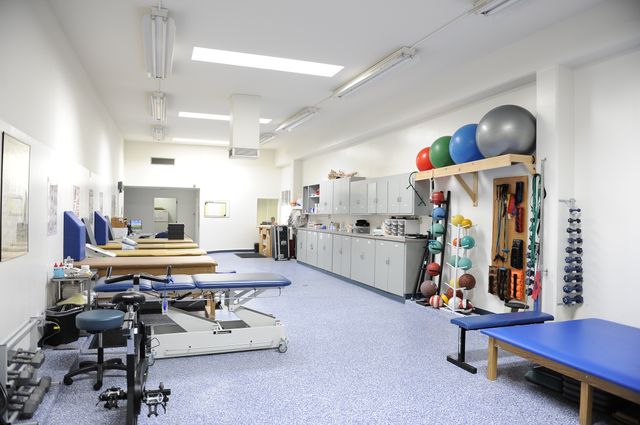By: Johnny Owens, MPT and Mario Novo, DPT, PT, BFR-R, Cert-DN
Guidelines established by the American College of Sports Medicine (ACSM) say that producing a strength and hypertrophy muscle response requires an individual lift moderate to heavy loads greater than 65% of a 1 repetition max (RM) over a 12-16 week period. Unfortunately, most injured athletes are unable to tolerate these loads, especially in the acute and sub-acute phases of rehabilitation secondary to pain or post-operative restrictions.
Recently, it has become clearer that the subsequent loss of muscle mass and strength post-injury is in large part due to a downregulation of muscle protein synthesis in the injured limb – this is defined as Anabolic Resistance. As illustrated in a 2013 study in The Journal of Endocrinology & Metabolism, two weeks of limb immobilization leads to local declines in the rate of muscle protein synthesis by almost 30 percent. To provide a surrogate of measure for the mass of lost muscle, that is roughly 350 grams – or the mass of an adult human heart – that was lost due to disuse atrophy. Notably, these changes in muscle mass also had drastic effects on muscle strength, also demonstrating a loss of 30 percent following this two weeks of limb immobilization. Thus, rehabilitation professionals need an option to increase muscle protein synthetic rates while respecting the limited loads required after injury or surgery.
Personalized Blood Flow Restriction Rehabilitation (PBFR) may provide clinicians with an opportunity to tap into anabolic pathways such as muscle protein synthesis to induce positive muscle changes similar to heavy lifting in order to combat the effects of Anabolic Resistance or muscle atrophy.
PBFR is the application of a specialized medical tourniquet to the proximal thigh or upper arm of a working muscle, which allows athletes to tap into anabolic pathways while exercising at very low loads (as low as 10-30% 1RM). Blood flow is reduced in the limb to allow a partial amount of arterial inflow and minimal-to-no venous outflow. Because the pressures needed to achieve this limb occlusion value vary based on an individual’s limb size, tissue density, systolic blood pressure and cuff width, placement clinicians use a Doppler system within the medical tourniquet to allow for personalization of tourniquet pressure for each athlete. Once the personalized pressure is established and the tourniquet cuff is inflated, the athlete performs his rehabilitation exercises as he would normally, but now in a hypoxic state.
Combating Anabolic Resistance
By performing PBFR on an injured athlete, the clinician is able to activate muscle protein synthesis to a much higher level than traditional low-level rehabilitation exercises. For instance, studies in the Journal of Applied Physiology from 2007 and again in 2010 have demonstrated a significant rise in muscle protein synthesis after PBFR training at low loads. This may prove to be a powerful tool for clinicians to combat one of the biggest problems in rehabilitation: post-injury atrophy seen during times of disuse.
Other Applications to Athletes
Tapping into the anabolic pathway and fast twitch muscle fibers via low load exercise and PBFR results in a number of other potential benefits for athletes. For one, the low loads associated with PBFR do not appear to create the typical muscle damage response seen with high-intensity training (HIT). Meaning that in-season athletes may be able to use PBFR training as a way to achieve the effects of HIT without the subsequent downtime and Delayed Onset Muscle Soreness (DOMS) associated with traditional training. This technique may also allow clinicians to combat the chronic overuse and muscle damage associated with competitive play while enhancing positive muscle changes. Additionally, the use of PBFR affects pathways such as endogenous growth hormone release and proliferation of myogenic stem cells which, although not fully understood, could assist in the healing and recovery of a competitive season and injuries.
A Broader Audience
Johnny Owens, MPT, former Chief of Human Performance Optimization at the Center for the Intrepid in San Antonio began applying PBFR as a means for treating blast trauma service members to help them gain lower extremity strength and avoid delayed amputations. The initial application was extremely successful in this population and the first DOD paper of these positive results was published in the Journal of Special Operations Medicine. Over time, Owens and his colleagues moved from blast trauma to military sports medicine injuries and realized the same clinical success. From this, Owens is currently involved in multi-center PBFR trials studying effects after ACL reconstruction, Achilles tendinopathy, wrist fractures, total joint arthroplasty and femur features – to name a few.
The success seen with service members has translated to the civilian sector and Owens (through his company Owens Recovery Science, Inc.) has currently worked with over 91 professional and collegiate teams and has certified over 650 clinicians throughout the United States in PBFR. Medical device clearance for the PBFR unit used by Owens is set to be finalized in Europe with professional soccer, rugby and national Olympic centers set to be trained.

